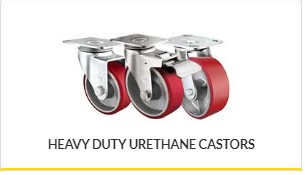One key factor that significantly influences operational efficiency is the warehouse layout. As per the guides explained by equip2go.com.au well-designed warehouse layout can streamline processes, reduce operational costs, and enhance overall productivity.
Conduct a Comprehensive Analysis
Before making any changes to your warehouse layout, it’s essential to conduct a thorough analysis of your current setup. Assess the flow of goods, identify bottlenecks, and understand the specific needs of your operations. This analysis should take into account factors such as the volume and variety of products, order picking processes, and the frequency of inventory turnover.
Embrace a Zoning System
Implementing a zoning system is an effective way to organize your warehouse layout. By dividing the space into specific zones based on product types, order frequency, or processing stages, you can create a more structured and efficient environment. For example, high-velocity items can be placed closer to shipping areas to minimize travel time during order fulfillment.
Optimize Aisles and Pathways
A well-designed warehouse layout includes optimized aisles and pathways that facilitate smooth movement of goods and personnel. Consider implementing a layout that minimizes the distance traveled by workers, reducing the time and effort required to fulfill orders. Narrower aisles may be suitable for high-density storage, while wider aisles are necessary for efficient movement of larger items or equipment.
Emphasize Vertical Space Utilization
Maximizing vertical space is often an overlooked aspect of warehouse optimization. Utilize tall shelving and racks to make the most of the available vertical space. Implementing mezzanine levels or multi-tier shelving systems can significantly increase storage capacity without expanding the warehouse’s footprint. This approach is particularly beneficial for warehouses dealing with a high volume of SKUs.
Prioritize Fast-Moving Items
Identify and prioritize the fast-moving items in your inventory. These high-velocity products should be strategically placed near packing and shipping areas to minimize picking and packing times. Utilize methods such as ABC analysis to categorize products based on their importance and movement frequency. By optimizing the placement of these items, you can reduce order fulfillment times and enhance overall efficiency.
Invest in Technology
The integration of technology is a game-changer when it comes to warehouse optimization. Implementing warehouse management systems (WMS), RFID technology, and automated material handling systems can greatly improve accuracy, speed, and overall efficiency. WMS, for instance, helps with real-time inventory tracking, order processing, and workforce management, leading to better decision-making and resource utilization.
Create a Flexible Layout
Flexibility is key in a dynamic business environment. Design your warehouse layout with scalability and adaptability in mind. As your business grows or undergoes changes in product lines, your Warehouse Equipment in Melbourne should be able to accommodate these shifts seamlessly. Modular storage solutions and easily reconfigurable layouts can help you adapt to evolving business needs without undergoing major overhauls.
Implement Cross-Docking Techniques
For businesses focused on reducing storage and handling costs, cross-docking can be a valuable strategy. This technique involves unloading incoming goods from suppliers and loading them directly onto outbound trucks with minimal storage time. By streamlining the transfer process, cross-docking minimizes handling and storage costs while accelerating order fulfillment.
Employee Input and Safety
Your warehouse staff plays a crucial role in daily operations, and their input can provide valuable insights into improving efficiency. Engage employees in the planning process and consider their feedback on the practicality of the proposed layout changes. Additionally, prioritize safety by ensuring clear signage, well-maintained equipment, and proper training to minimize accidents and downtime.
Conclusion
Optimizing your warehouse layout for efficiency is a continuous process that requires a strategic approach and a commitment to improvement. By conducting a comprehensive analysis, embracing zoning systems, optimizing aisles, utilizing vertical space, prioritizing fast-moving items, investing in technology, creating a flexible layout, implementing cross-docking, and considering employee input and safety, you can create a warehouse environment that maximizes efficiency, reduces operational costs, and positions your business for success in the competitive landscape of supply chain management.


